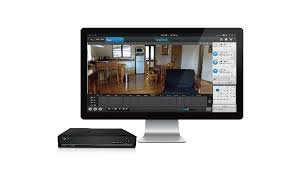What is IP Bullet Camera
What is IP Bullet Camera
An IP bullet camera, also known as a network bullet camera, is a type of digital security camera designed for outdoor use. It shares the classic cylindrical bullet shape of its analog counterpart but transmits video data over a network connection (Ethernet cable or Wi-Fi) instead of analog signals. Here's a breakdown of its key features:
Similarities to Analog Bullet Cameras:
Bullet-shaped housing: Ideal for outdoor environments, offering weatherproof and vandal-resistant protection.
Varifocal lens (optional): Some models allow adjusting the field of view for focused monitoring.
Night vision: Many IP bullet cameras come equipped with infrared (IR) illuminators for capturing clear footage in low-light conditions.
Advantages over Analog Bullet Cameras:
Superior Image Quality: IP cameras offer high-definition (HD) or even 4K resolution compared to the standard definition (SD) limitations of analog cameras, providing sharper and clearer images for better identification of objects and people.
Digital Transmission: Video data travels over a network, minimizing signal loss compared to analog signals transmitted over coaxial cables, especially over longer distances.
Scalability: Adding new IP cameras to your system is simpler. They connect to the network, eliminating the need for complex additional cabling required for analog systems.
Advanced Features: IP bullet cameras often boast a wider range of advanced features, including:
High-quality Night Vision: IP cameras can offer superior night vision with better range and clarity compared to analog cameras, utilizing advanced IR technology or starlight night vision for low-light situations.
Remote Pan-Tilt-Zoom (PTZ) Control (optional): Some bullet cameras are PTZ-enabled, allowing you to control their viewing angle remotely through a web interface or mobile app.
Two-way Audio (optional): Certain models have built-in microphones and speakers, enabling two-way communication for interacting with visitors or deterring intruders.
Motion Detection with zones: With higher processing power, IP cameras can offer more sophisticated motion detection with customizable zones and alerts.
Remote Access: View live and recorded footage from anywhere with an internet connection using a web browser or mobile app.
Power over Ethernet (PoE) (optional): This technology allows transmitting both data and power over a single Ethernet cable, simplifying installation and reducing cable clutter.
Types of IP Bullet Cameras:
Standard IP Bullet Camera: This is the basic type with a fixed lens.
Varifocal Lens IP Bullet Camera: Offers adjustable focal length for customizing the field of view.
Day/Night IP Bullet Camera: Automatically switches between color mode for daytime and black and white night vision with IR illuminators.
Weatherproof IP Bullet Camera: Designed to withstand outdoor elements.
Vandal-resistant IP Bullet Camera: Features a sturdy build and may have additional anti-tampering mechanisms.
PTZ IP Bullet Camera: Allows remote control of pan, tilt, and zoom functions.
Before Choosing an IP Bullet Camera:
Consider these factors when selecting an IP bullet camera:
Resolution: Higher resolution provides sharper images (HD or 4K).
Night Vision: Consider the required night vision range for your environment.
Weatherproofing: Ensure it's suitable for your climate.
Vandal Resistance: Important if the camera is in a high-risk area.
Audio: Two-way audio can be a valuable feature for some applications.
PoE: Simplifies installation but may require compatible equipment.
By understanding the features and types of IP bullet cameras, you can choose the ones that best suit your security needs and environmental considerations for a robust and future-proof security system. To learn more on the installation of IP Bullet Camera, watch my Videos on YouTube At *Nikitis Technology*









Comments
Post a Comment